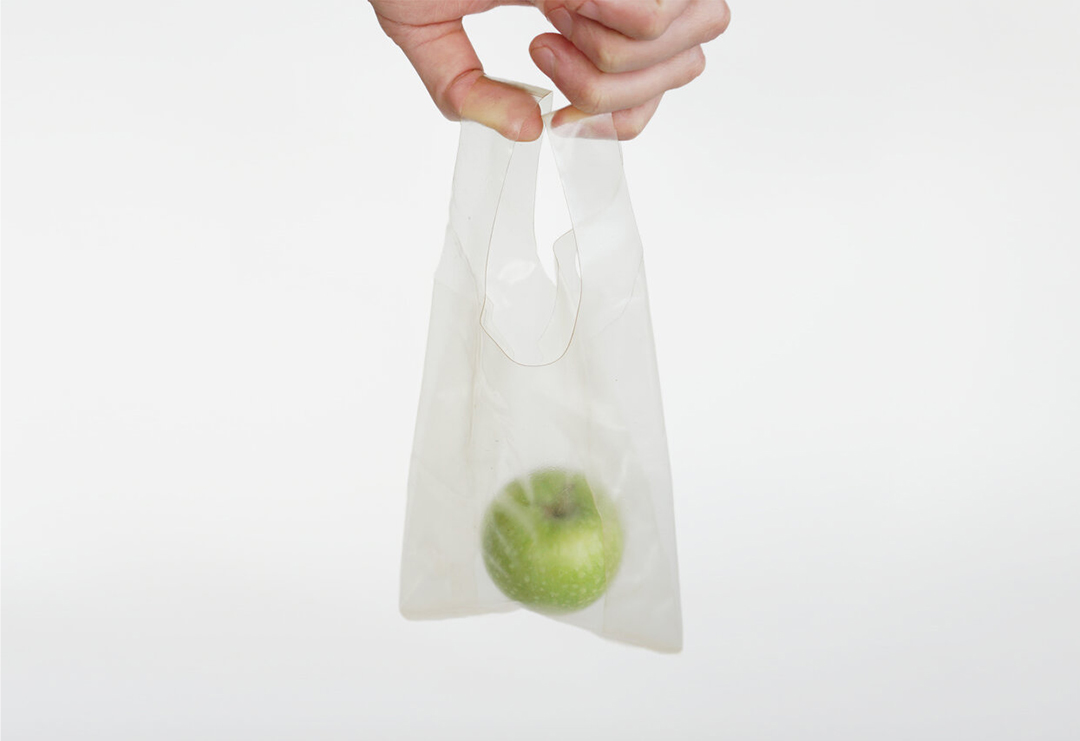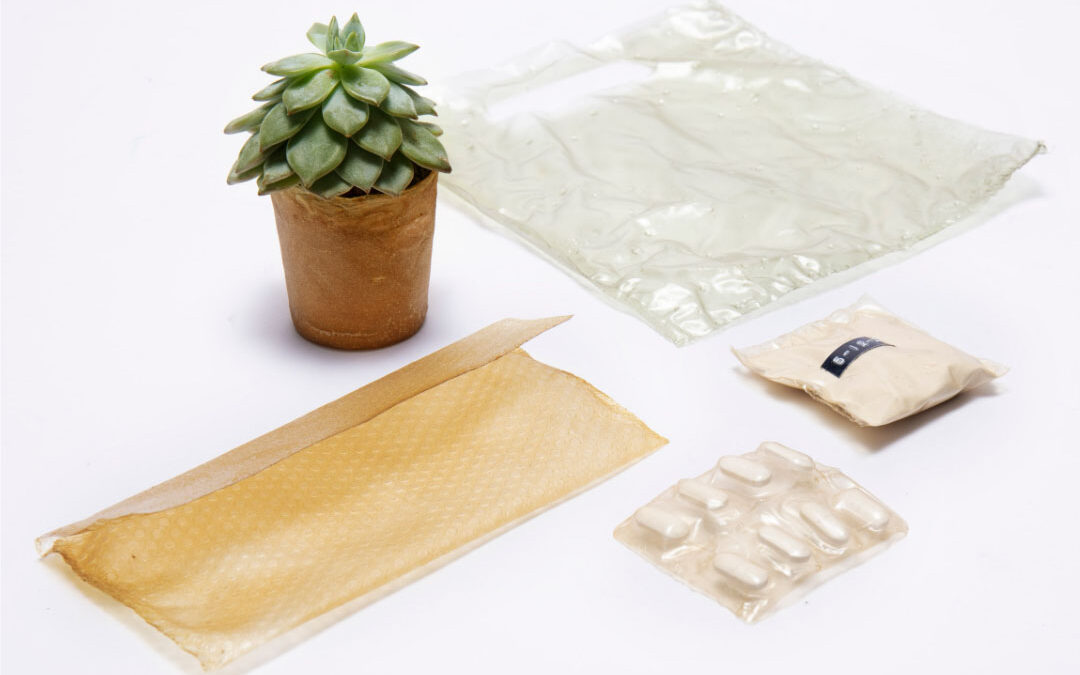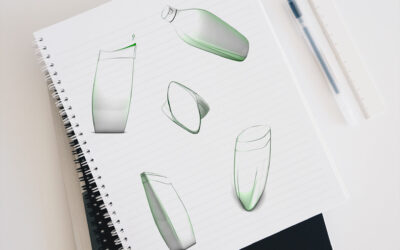The market of sustainable material is constantly growing. You might find yourself confused about which is the “most sustainable option” for your application.
The most sustainable option always depends on your own specific case. You might have budget constraints or technical performance constraints which would narrow down your choice. Therefore there is no general “most sustainable” option, however for your case, a specific option might be the one that had the highest impact.
When we went through the process of selecting the material for our own product Nepenthes, we wanted to make sure to tick all the sustainability boxes. From an environmental perspective, for us it was important that the raw material was going to be renewable resources and that at the end-of-life, the material was not going to pollute. Ultimately, we chose a material which is made from sugar cane and at the end-of-life it is recyclable. We also ran a lifecycle assessment to ensure that the environmental impact of such material was going to be lower than other similar options available in the market.
Of course, each product is different and has different requirements, it is therefore not always evident which material would work for you. With the expertise we acquired along the process of developing our own product from scratch, we can give recommendations to others who are going through the same challenges.
You might find yourself in a situation where you have various options and don’t really know which one to go for. We therefore developed a system which guides you through your decision making.

- Scoping
- Sustainability strategy
- Material research and benchmarking
- Prototype
Scoping
In the scoping phase, we understand the potential constraints that the product might present. Having a clear idea of these constraints at the beginning will help a lot to make the right choice.
Commercial constraints
These constraints can be commercial. This includes budget, units requirement, and timeline. The latter are all parameters that can narrow down your options substantially. It is therefore important to clarify this at the beginning.
Technical constraints
The other types of constraints are technical. Depending on the functionality of your product, you might need the material to have a certain flexibility or stiffness or need to be compatible with certain substances. We usually start with a list of technical requirements that the product needs to fulfil in order to have a good understanding of which categories of material we will need to target. Having a technical understanding of which material can achieve which performance is always an advantage here.
Sustainability strategy
In the following phase, we analyse the various components of the product and we choose a sustainability strategy.
Product Analysis
We start by analysing the various components of your product. The latter might include several components and therefore you might need to select various materials at once. During this process also analyse the lifecycle of the product and identify the hotspots where there is the higher potential for changes.
Sustainability strategy
Based on the above product analysis, we decide on a strategy to follow. Which strategy will achieve the biggest impact? The strategy can also be focused on one specific phase of the lifeycle. For instance, a sustainability strategy can be to have a reusable product which needs to last for a very long time. The material will need therefore to be durable and should withstand potential damages and impacts.
In order to choose a strategy we follow the eco-design methods, such as design for recycling, design for reuse, design for maintenance, design for biodegradability. More information on the latter can be found here https://www.tandfonline.com/doi/full/10.1080/21681015.2016.1172124
Eco-design is the foundation for our design processes and obviously affects the material choice as well.
Material research and benchmarking
Material research
Following the sustainability strategy, the material research can start. This process includes finding materials that match the product functionality and sustainability strategy.
A source of inspiration can be the Material Lab from Milk which is very thorough and covers all sorts of materials. This list categorises materials into the following: Polymers, Glass&Ceramics, Paper, Metal, Wood, Textile & Leather.
Our work includes getting in contact with suppliers and confirming that the material can be used for the specific product application. This phase is time consuming as each supplier has their own system, and has ways of categorising their material which might be different from another supplier. Since you might speak to the commercial representative, you might dig deeper to find out more information on the material itself.
Some challenges that you might find along the way, are:
- The suppliers might be quite secretive about their materials composition
- There might be a lot of greenwashing behind the material
- The material is too expensive
- The material might not match the technical performance you require
- Ensuring that the material can be used for your product application and matches your budget is an absolute must during this phase.
Benchmarking
Once we have a list of materials and material suppliers, we benchmark the various options from a commercial and sustainability perspective. We first select the relevant comparison parameters. Thereafter we develop a matrix that benchmark each option against the other following the important parameters.
This benchmarking exercise can really be an opener as there might have been things you didn’t see before, since there are so many parameters to consider. Also, one parameter might be more important than another, and this is something that can change things.
Samples and prototyping
Asking samples of the material is another essential step. Make sure to always check the material with your own eyes and hands.
The final step into choosing a suitable sustainable material is to produce a prototype. This might be a challenging step because usually a prototype is only a few units and material suppliers work with much larger quantities and they might not have the chosen material in stock. They therefore need to produce a new batch which matches your requirements.
Some of our favourite sustainable sustainable materials are:
Mycelium based material: Ecovative
Natural fibres material: Enkev
Marilu is an award-winning designer, actively working in the circular economy field. She consults on sustainable product strategy and she designs innovative packaging solutions. Her experience combines a creative approach with the technical experience of packaging manufacturing and plastic recycling.
The most sustainable bottle has a unique design
Sustainability manifests itself in many ways and is divided into different areas. From social to technological, ecological to economic aspects, the overarching theme of sustainability offers several opportunities to create your own impact. With the Nepenthes bottle,...
Nepenthes: The Most Eco-Friendly Refillable Shampoo Bottle
The cosmetics industry manufactures its products in disposable packaging and generates tonnes of garbage. We use over 800 shampoo bottles in our entire life. There is no such alternative to reusing a shampoo bottle rather than throwing it away after only one use. If...
European Plastics Pact
The guidelines at European level for plastic industry players on sustainable packaging At European level as well as worldwide, new legislations for sustainable packaging have been approved which monitor the amount of plastic packaging produced. Each company using a...




